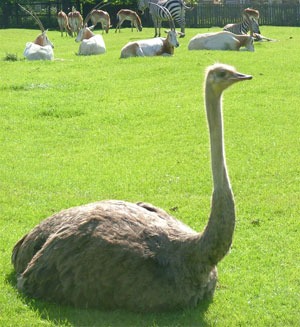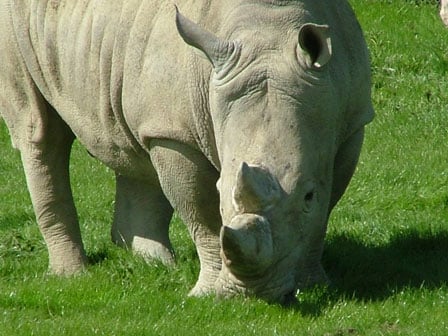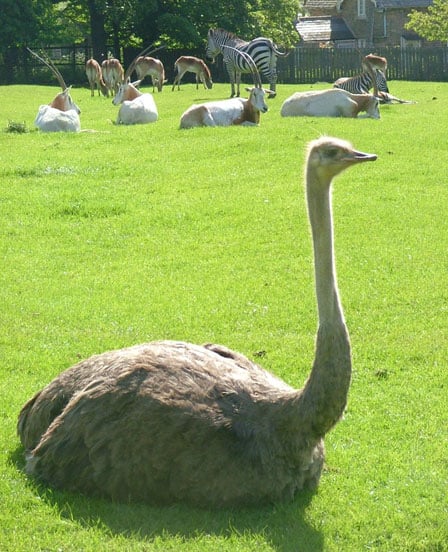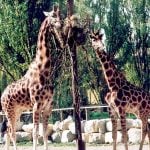Unusual Christmas Presents For Flamingo Land

This December has seen a number of new arrivals at the zoo, including two rhinos, an ostrich, and also three scimitar-horned oryx on their way.
These animals are arriving as part of Flamingo Land’s membership of international conservation breeding programmes. Breeding animals in captivity is required to maintain captive population numbers, and also to keep the genetic diversity as varied as possible. Each species of animal is managed by a “studbook keeper”, who keeps a record of the location and number of animals, their genetic history, and their suitability for breeding. The studbook keeper then acts as an animal match-maker, pairing up animals that are suitable to breed. This means that zoos occasionally swap animals with each other to increase breeding success.
Flamingo Land’s two incoming young male rhinos have replaced our previous two strapping males, who left the same day for zoos in Denmark and the Czech Republic. Moving a rhino across Europe is no mean feat, with heavy traffic delaying the arrival of our old males into their new homes. Moving the rhinos also required the use of specially converted shipping containers and very large cranes. Our other new arrivals are a little easier, of which we are most excited by the scimitar-horned oryx, which is extinct in the wild. One day we hope to send part of our herd back to their original range in north Africa. Watch this space!
This year, visitors to Flamingo Land have a bit more opportunity to see our winter arrivals, as the zoo will be open over the Christmas period for the second year running. This is partly thanks to the wonderful work of our education team, who will be on hand to tell our visitors about our animals and the vital conservation work that is going on to protect them. Educating visitors about conservation, the animals, and what they can do to help, is one of the main aims of any good zoo. But the education work does not stop at home. Flamingo Land’s Udzungwa Forest Project in Africa also carries out a very different kind of education for Tanzanian villagers. In Africa, our education is mostly about how best to protect forests, because these are the places that help to maintain life for both the African people and the animals.




